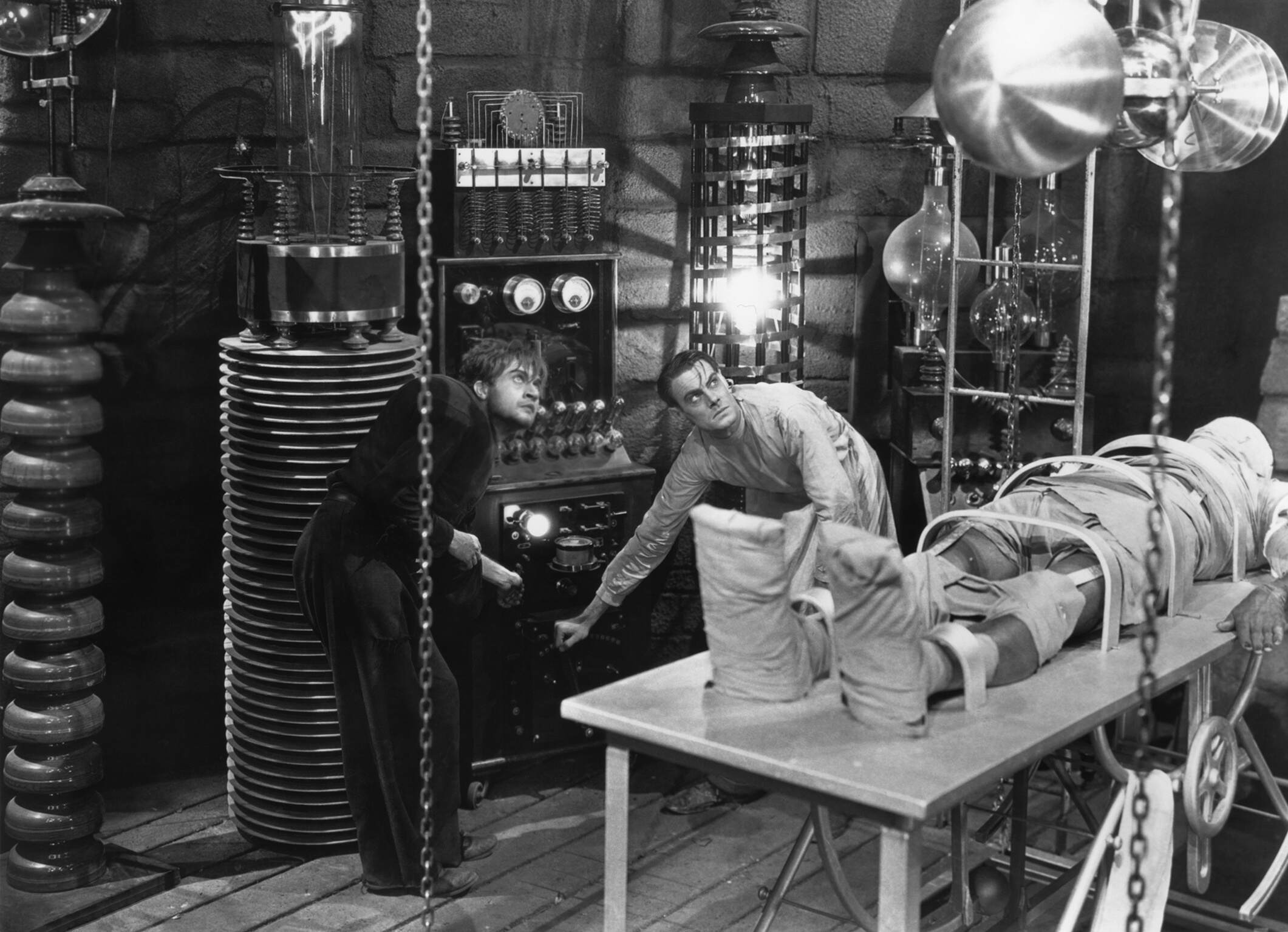
Did you know that Frankenstein experiments have fascinated people for centuries? These bizarre and often misunderstood scientific endeavors have sparked countless debates, inspired numerous films, and even influenced modern science. But what exactly are Frankenstein experiments? They refer to attempts at creating life or reanimating the dead, much like the fictional work of Dr. Victor Frankenstein in Mary Shelley's classic novel. From early electricity experiments to modern genetic engineering, these ventures push the boundaries of what we consider possible. Curious about the real-life stories behind these experiments? Let's dive into 37 intriguing facts that will shed light on the history, science, and ethical dilemmas surrounding these controversial pursuits. Buckle up for a journey through the weird and wonderful world of Frankenstein experiments!
Key Takeaways:
- Mary Shelley's "Frankenstein" was inspired by scientific advancements and ethical questions, shaping the novel's themes of creation, responsibility, and the consequences of unchecked scientific ambition.
- The legacy of "Frankenstein" extends beyond literature, influencing science, ethics, and popular culture, paving the way for the development of science fiction and sparking discussions about its themes and cultural impact.
The Origins of Frankenstein Experiments
Mary Shelley's "Frankenstein" is a cornerstone of gothic literature. The story of Victor Frankenstein and his monstrous creation has fascinated readers for centuries. Here are some intriguing facts about the origins of these experiments.
- Mary Shelley conceived the idea for "Frankenstein" during a ghost story competition with friends, including Lord Byron and Percy Bysshe Shelley, in 1816.
- The novel was first published anonymously in 1818, with Mary Shelley only being credited in the second edition in 1823.
- Shelley was just 18 years old when she started writing "Frankenstein" and 20 when it was published.
- The full title of the novel is "Frankenstein; or, The Modern Prometheus," drawing a parallel between Victor Frankenstein and the Greek mythological figure who defied the gods by giving fire to humanity.
Scientific Inspirations Behind Frankenstein
Shelley's work was heavily influenced by the scientific advancements and experiments of her time. Let's delve into the scientific inspirations behind the novel.
- Shelley was inspired by the experiments of Luigi Galvani, who discovered that frog legs twitched when struck by an electrical spark, leading to the study of bioelectricity.
- Alessandro Volta's invention of the electric battery also played a role in shaping the novel's themes of life and electricity.
- The novel reflects the fascination with galvanism, the idea that electricity could reanimate dead tissue.
- Shelley was influenced by the work of Erasmus Darwin, who speculated about the possibility of spontaneous generation and the reanimation of dead matter.
The Creation of the Monster
Victor Frankenstein's creation of the monster is one of the most iconic moments in literature. Here are some facts about this pivotal event.
- The monster is never given a name in the novel; he is referred to as "the creature," "the monster," or "the fiend."
- Contrary to popular belief, the novel does not describe the monster's creation in detail, leaving much to the reader's imagination.
- The monster's physical appearance is described as having yellow skin, watery eyes, and black lips, which contrasts with the green-skinned depiction in popular culture.
- Victor Frankenstein uses parts from various corpses to create the monster, emphasizing the theme of the unnatural assembly of life.
The Monster's Journey
After his creation, the monster embarks on a journey of self-discovery and revenge. Here are some key facts about his experiences.
- The monster learns to speak and read by observing a family living in a cottage, highlighting his intelligence and capacity for learning.
- He reads "Paradise Lost," "Plutarch's Lives," and "The Sorrows of Young Werther," which shape his understanding of humanity and his own existence.
- The monster's request for a female companion is a pivotal moment in the novel, reflecting his desire for companionship and acceptance.
- Victor's refusal to create a mate for the monster leads to a tragic chain of events, including the deaths of several of Victor's loved ones.
Frankenstein in Popular Culture
"Frankenstein" has had a lasting impact on popular culture, inspiring countless adaptations and reinterpretations. Here are some interesting facts about its cultural influence.
- The first film adaptation of "Frankenstein" was a silent film made by Edison Studios in 1910.
- Boris Karloff's portrayal of the monster in the 1931 film "Frankenstein" became iconic, influencing the monster's depiction in subsequent adaptations.
- The phrase "It's alive!" from the 1931 film is one of the most famous lines associated with the story, even though it does not appear in the novel.
- "Frankenstein" has inspired numerous adaptations in various media, including films, television shows, comic books, and stage plays.
Ethical Questions Raised by Frankenstein
Shelley's novel raises important ethical questions about scientific experimentation and the responsibilities of creators. Here are some thought-provoking facts about these themes.
- The novel explores the consequences of playing God and the ethical implications of creating life.
- Victor Frankenstein's abandonment of his creation raises questions about the responsibilities of creators towards their creations.
- The monster's suffering and rejection by society highlight themes of prejudice and the consequences of judging others based on their appearance.
- The novel can be seen as a cautionary tale about the dangers of unchecked scientific ambition and the potential consequences of pursuing knowledge without considering the ethical implications.
Real-Life Frankenstein Experiments
The fascination with reanimation and creating life has led to real-life experiments that echo the themes of Shelley's novel. Here are some examples.
- In the early 19th century, Italian scientist Giovanni Aldini conducted experiments using electricity to reanimate the bodies of executed criminals.
- In 1939, Soviet scientist Sergei Bryukhonenko developed a machine called the autojektor, which could keep the severed head of a dog alive for a short period.
- American scientist Robert E. Cornish attempted to revive dead animals using a combination of anticoagulants and artificial respiration in the 1930s.
- Modern scientific advancements, such as cloning and genetic engineering, continue to raise ethical questions similar to those explored in "Frankenstein."
Frankenstein's Legacy
The legacy of "Frankenstein" extends beyond literature, influencing science, ethics, and popular culture. Here are some lasting impacts of the novel.
- "Frankenstein" is considered one of the first science fiction novels, paving the way for the genre's development.
- The novel's themes of creation, responsibility, and the consequences of scientific experimentation continue to resonate with readers and scholars.
- "Frankenstein" has inspired numerous academic studies and discussions about its themes, characters, and cultural impact.
- The term "Frankenstein" has entered the lexicon as a metaphor for any creation that becomes uncontrollable or destructive.
Fun Facts About Frankenstein
Let's wrap up with some fun and lesser-known facts about "Frankenstein" and its creation.
- Mary Shelley claimed that the idea for "Frankenstein" came to her in a vivid waking dream.
- The novel was initially met with mixed reviews, but it has since become a classic of English literature.
- Mary Shelley's mother, Mary Wollstonecraft, was a famous feminist writer, and her father, William Godwin, was a renowned philosopher.
- The novel has been translated into numerous languages and remains widely read around the world.
- "Frankenstein" continues to inspire new adaptations and reinterpretations, demonstrating its enduring relevance and appeal.
Final Thoughts on Frankenstein Experiments
Frankenstein experiments have fascinated people for centuries. These tales blend science fiction and horror, sparking curiosity about the limits of science and ethics. Mary Shelley's novel, "Frankenstein," remains a cornerstone, influencing countless books, movies, and discussions. The idea of creating life from non-living matter challenges our understanding of life and death.
Modern science has made strides in genetics and biotechnology, but the ethical questions raised by Frankenstein's story are more relevant than ever. Cloning, genetic engineering, and artificial intelligence push boundaries, making us ponder the consequences of playing god.
Understanding these experiments helps us appreciate the delicate balance between innovation and morality. As science advances, remembering the lessons from Frankenstein can guide responsible and ethical progress. The story isn't just about a monster; it's a cautionary tale about the power and responsibility of scientific discovery.
Frequently Asked Questions
Was this page helpful?
Our commitment to delivering trustworthy and engaging content is at the heart of what we do. Each fact on our site is contributed by real users like you, bringing a wealth of diverse insights and information. To ensure the highest standards of accuracy and reliability, our dedicated editors meticulously review each submission. This process guarantees that the facts we share are not only fascinating but also credible. Trust in our commitment to quality and authenticity as you explore and learn with us.


